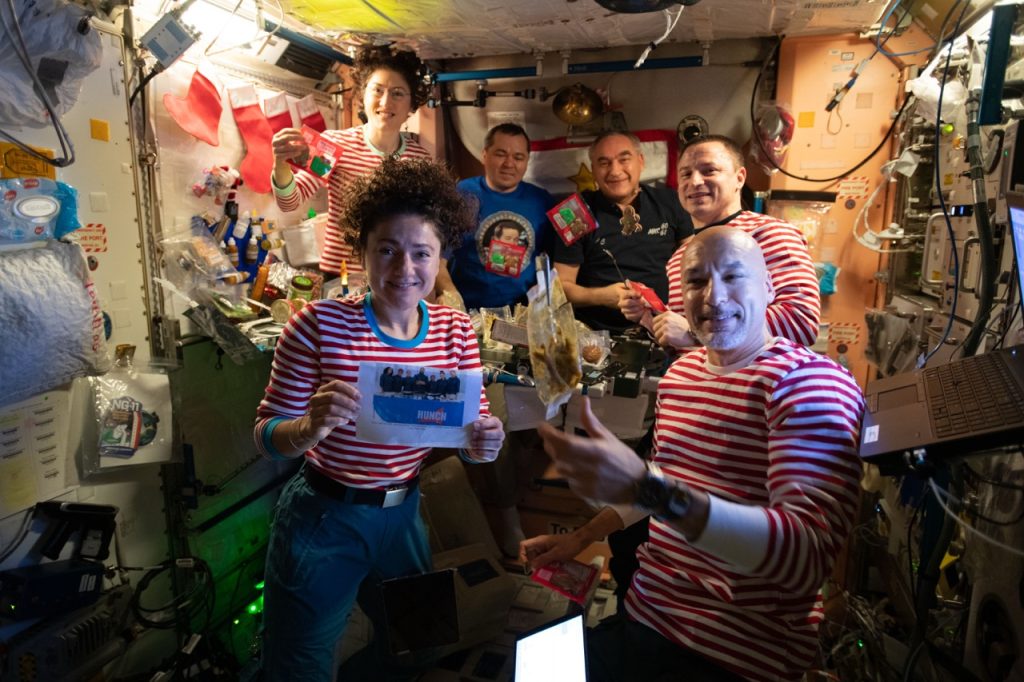
Every Friday and Saturday you can meet a space explorer at Space Center Houston’s.
Polansky joined NASA in August 1992 as an aerospace engineer and research pilot. After being assigned to the Aircraft Operations Division at NASA Johnson Space Center, his primary responsibilities involved teaching astronaut pilots space shuttle landing techniques in the Shuttle Trainer Aircraft and instructing astronaut pilots and mission specialists in the T-38 aircraft. Polansky also conducted flight testing of the NASA T-38 avionics upgrade aircraft.
He was selected as an astronaut candidate in April 1996 and began training four months later. He was initially assigned as a member of the Astronaut Support Personnel team at the Kennedy Space Center, Florida supporting space shuttle launches and landings. Polansky also served as Chief of the CAPCOM branch, Chief Instructor astronaut and Chief of the Return to Flight and Orbiter Repair branches.
Spaceflight experience
A veteran of three space flight, Polansky has logged more than 993 hours in space. He was the pilot on STS-98 and the mission commander on STS-116 and STS-127.
-
 STS-98 Atlantis (Feb. 9-20, 2001): The STS-98 crew continued the task of building and enhancing the International Space Station (ISS) by delivering the U.S. laboratory module Destiny. The shuttle spent seven days docked to the station while Destiny was attached and three spacewalks were conducted to complete its assembly. The crew also relocated a docking port and delivered supplies and equipment to the resident Expedition-1 crew. Mission duration was 12 days, 21 hours, 20 minutes.
STS-98 Atlantis (Feb. 9-20, 2001): The STS-98 crew continued the task of building and enhancing the International Space Station (ISS) by delivering the U.S. laboratory module Destiny. The shuttle spent seven days docked to the station while Destiny was attached and three spacewalks were conducted to complete its assembly. The crew also relocated a docking port and delivered supplies and equipment to the resident Expedition-1 crew. Mission duration was 12 days, 21 hours, 20 minutes.
-
 STS-116 Discovery (Dec. 9-22, 2006): The seven-member crew on this 12-day mission continued construction of the ISS by adding the P5 spacer truss segment during the first of four spacewalks. The next two spacewalks rewired the station’s power system, preparing it to support the addition of European and Japanese science modules by future shuttle crews. The fourth spacewalk was added to allow the crew to coax and retract a stubborn solar panel to fold up accordion-style into its box. Discovery also delivered a new crew member and more than two tons of equipment and supplies to the station. Almost two tons of items no longer needed on the station returned to Earth with STS-116. Mission duration was 12 days, 20 hours and 45 minutes.
STS-116 Discovery (Dec. 9-22, 2006): The seven-member crew on this 12-day mission continued construction of the ISS by adding the P5 spacer truss segment during the first of four spacewalks. The next two spacewalks rewired the station’s power system, preparing it to support the addition of European and Japanese science modules by future shuttle crews. The fourth spacewalk was added to allow the crew to coax and retract a stubborn solar panel to fold up accordion-style into its box. Discovery also delivered a new crew member and more than two tons of equipment and supplies to the station. Almost two tons of items no longer needed on the station returned to Earth with STS-116. Mission duration was 12 days, 20 hours and 45 minutes.
 STS-127, ISS Assembly Mission 2J/A, Endeavour (July 15-31, 2009): On the STS-127 mission the crew delivered the Japanese-built Exposed Facility (JEM-EF) and the Experiment Logistics Module Exposed Section (ELM-ES) to the ISS. The crew completed the construction of the KIBO Japanese Experiment Module, installed scientific experiments on its Exposed Facility and delivered critical spare parts and replacement batteries to the orbital complex, in addition to transferring 24,638 pounds of hardware and 1,225 pounds of water to the station. While the shuttle was docked, the mission featured a record 13 astronauts working aboard the station representing all five ISS partners — NASA, the Russian Space Agency, the Canadian Space Agency, the European Space Agency and the Japanese Space Agency. The 16-day mission included five spacewalks and was accomplished in 248 orbits of the Earth, traveling 6,547,853 million miles in 15 days, 16 hours, 44 minutes and 58 seconds.
STS-127, ISS Assembly Mission 2J/A, Endeavour (July 15-31, 2009): On the STS-127 mission the crew delivered the Japanese-built Exposed Facility (JEM-EF) and the Experiment Logistics Module Exposed Section (ELM-ES) to the ISS. The crew completed the construction of the KIBO Japanese Experiment Module, installed scientific experiments on its Exposed Facility and delivered critical spare parts and replacement batteries to the orbital complex, in addition to transferring 24,638 pounds of hardware and 1,225 pounds of water to the station. While the shuttle was docked, the mission featured a record 13 astronauts working aboard the station representing all five ISS partners — NASA, the Russian Space Agency, the Canadian Space Agency, the European Space Agency and the Japanese Space Agency. The 16-day mission included five spacewalks and was accomplished in 248 orbits of the Earth, traveling 6,547,853 million miles in 15 days, 16 hours, 44 minutes and 58 seconds.
Polansky retired from NASA in June 2012. Click here to read his full NASA biography.








